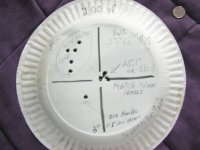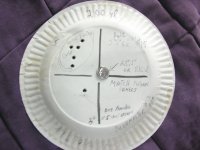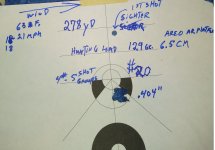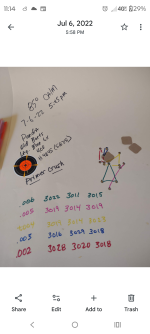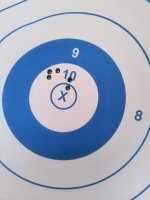Oh so true...
I recognize everyday that expecting perfection is unrealistic.
Having said that, the pursuit of perfection is where the fun is. It gets frustrating at times because you overthink solutions, make things harder than it needs to be and make dumb mistakes and sometimes it becomes “one step forward and two steps back” but then other times it is simply “two steps forward”.
Every day it's forward ,there's NO looking back ; What has been done is history ,so forward with more precise plan is the objective .
In reality oh so many things must come together for nearly perfect bullet placements . We all know the variable including those already mentioned . Yet often I observe MANY not considering Temp ,Humidity and wind variation and then turning back their hand in time ,so as to reference a previous targets performance using the same loads .
I have twice in MY shooting life placed a bullet through the same hole as it's predecessor . Now I'm not saying next too or ever so close but Exactly through the calibers diameter ,as the target wasn't torn simply a clean hole ,yet the backer verified two hits .
I've been loading MY own since 66 and in doing so have had less than a handful of hunting Rifles ,which wouldn't shoot under 1.25 MOA.
with careful hand-loading .
Target Rifles sub MOA .250 - .500 . Having built ,OK assembled ( as I didn't machine bore or do their rifling ) better than a dozen AR platforms in various calibers ,I can say Many are successful ,some are exceptional and others are Sub 1.25 MOA. .
Again You pays your monies and You takes Your chances . All components are NOT created equal !.
One of the Very BEST AR 5.56X45mm Riles I own and shoot ,I DIDN'T even build !. People often call this BS ,Yet I did it in front of more than 2 dozen LEO ,at a picnic . Exhibition of custom made ammo's accuracy . Off the ground NO mat NO sandbags ,extended palm wrapped in the sling in Mid 90's . Shot #1 fouler ,then #5 rounds of Winchester white box ,same POA ,see results .
I then placed #15 rounds into the mag of LC prepped cases Fed Match primers ,.55gr. Winchester Bulk bullets W/ cannelure no less and 25.5 gr. BLC-2 . Proceeded to shoot out of MY 20" Bushmaster A2-XM15 W/chrome lined bore a group of #15 shoots at a measured 200 yd. . As anyone can see a dime covered that group . Needless to say a fair amount of Swat officers Jaws hung open that day .
IF ,I'd not had a job already ,I'd more than likely still be making ammo for a # of them

That Bushmaster has an un-fired Twin brother ,which sports #6 serial #'s off . I tried getting consecutive #'s but NO GO as that's the close I've ever gotten .
MY Newest hunting Rifle is 6.5 CM ,which I did assemble and it's proving VERY EFFECTIVE even in the wind . My part of the world has WIND more times than not . Wind isn't tricky ,provided it's steady and one direction . Where it becomes a Major PITA ,is gusting or directionality changing then it's a PROBLEM . Thankfully here at nearly a mile in elevation ,it's just constant S -SW 0-70 MPH unless a cold front pushes through and then flips 180 Deg. .

